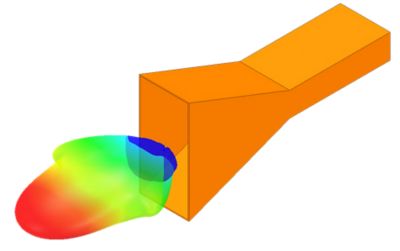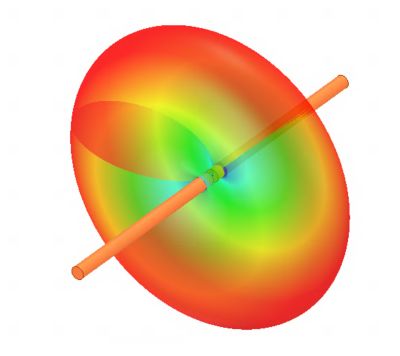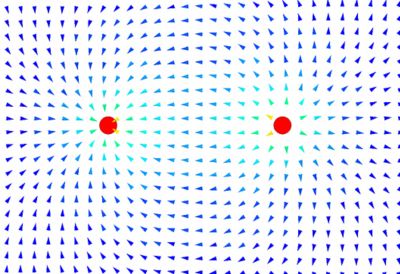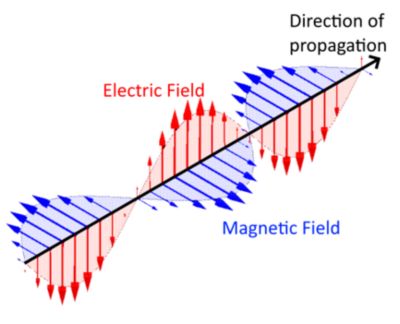-
-
Kostenlose Software für Studierende
Ansys unterstützt die nächste Generation von Ingenieur*innen
Studenten erhalten kostenlosen Zugang zu erstklassiger Simulationssoftware.
-
Verbinden Sie sich jetzt mit Ansys!
Gestalten Sie Ihre Zukunft
Stellen Sie eine Verbindung mit Ansys her, um zu erfahren, wie Simulation Ihren nächsten Durchbruch vorantreiben kann.
Länder und Regionen
Kostenlose Demoversionen
Produkte & Dienstleistungen
Lernportal
Über das Unternehmen
Back
Produkte & Dienstleistungen
Back
Lernportal
Ansys unterstützt die nächste Generation von Ingenieur*innen
Studenten erhalten kostenlosen Zugang zu erstklassiger Simulationssoftware.
Back
Über das Unternehmen
Gestalten Sie Ihre Zukunft
Stellen Sie eine Verbindung mit Ansys her, um zu erfahren, wie Simulation Ihren nächsten Durchbruch vorantreiben kann.
Kostenlose Demoversionen
ANSYS BLOG
November 20, 2021
A Winning Combination: Electromagnetics Studies and Ansys Simulation Lower Barriers to Success in Engineering Education
Just about any interaction we have with our electronic devices involves electromagnetics, whether we’re sending a text via a cell phone or typing search terms on a computer keyboard. Electromagnetics is a branch of physics that considers the interactions between fields and electrically charged particles. It forms the underlying physics of electronic technologies that encompasses many engineering applications. In a world increasingly defined by wireless communications and high-speed digital circuits, a strong foundation in electromagnetics studies helps set up engineering students for success.
Teaching electromagnetics at the undergraduate level is very math intensive. Students tend to struggle with math, which distracts from the very concepts they are trying to learn. They also have difficulty imagining things in three dimensions. Unfortunately, these all-to-familiar struggles often lead to student boredom, frustration, and attrition from engineering programs in universities. Ansys aims to break down these barriers to learning by offering every student free access to Ansys Electronics Desktop Student, unlocking engineering simulation technology that can bring their studies to life.

Kathryn L. Smith, Ph.D., assistant professor, Department of Electrical and Computer Engineering, University of North Carolina (UNC) Charlotte
Inspiring Students of Electromagnetics Through Simulation
In a traditional entry-level electromagnetics class, professors spend the first several weeks of the semester just talking about math to establish a firm foundation on which to build an understanding of the electromagnetics concepts discussed later in the course. Without that foundation, students cannot be successful in the rest of the course. From there, classwork often focuses largely on mathematical derivations and exercises, which, for many students, fails to connect to any meaningful application. For these students, the use of Ansys simulation software alongside the more traditional course curriculum can help to add concrete significance and real-world applicability to an otherwise very abstract subject.
“Electromagnetics is a very math-intensive course and can be very boring for students who don’t have a clear vision of its applicability,” says Kathryn L. Smith, Ph.D., assistant professor, Department of Electrical and Computer Engineering, University of North Carolina (UNC) Charlotte. “Bored students will take the required classes in electromagnetics because they have to, but they definitely won’t choose to take senior electives or graduate level classes in this area. However, if you can use simulation tools to pique their interest and connect class topics to concrete, real-world applications and job opportunities, you have a chance to retain students instead of losing them right in the beginning.”


It's not unusual for Smith to hear students use words like “pointless” and “impractical” to describe electromagnetics classes. Her first semester teaching an entry-level course at UNCC Smith received a lot of comments from her students about the class, including "this is just a lot of math. How does it apply to anything I want to do?" This feedback eventually inspired an idea. As a student, Smith had a senior level class that required her to use Ansys HFSS, a multipurpose, full-wave 3D electromagnetic simulation software application included in the free Electronics Desktop Student download. Recalling her own experience as an undergrad student, Smith realized that if she showed her students pictures and animations from HFSS to give them a way to visualize what they were learning, it could help to bring the math to life in a more meaningful way. And that’s when she began using Ansys simulation software in her undergraduate courses, including her entry-level electromagnetics class.
“Ansys HFSS can be used to create great visual aids for the classroom, giving students a solid connection between the math and the actual physical phenomena the math is meant to describe,” says Smith. “As future engineers, my students also benefit from exposure to industry-standard simulation tools, which are directly related to job opportunities they can be working toward. This helps them to make the connection between what we're doing in class and something that actually has real world applications at the junior level.”
Opening Up Possibilities Using Simulation in Electromagnetics Instruction
Since introducing simulation into her electromagnetics curriculum, Smith’s students have been taking advantage of a free download of Ansys Electronics Desktop Student to independently work on simulation models off campus, when on-campus licenses accessible through computer labs or a server aren’t the most convenient option. By downloading the free version onto their own computers, they can build their models outside of the computer lab environment, then bring them back to campus and simulate them.


Then there are the students who contact Smith outside of the university, some of whom are followers of her Ansys Innovation Courses introducing various topics related to electromagnetics. In the past, she encouraged students to see if they could access Ansys software on-campus through their university. Now she’s happy to share the news about Ansys Electronics Desktop Student with all of her students, including alumni who no longer have access to a university license and students who lack access to simulation software through their current university, to practice and try out different simulation capabilities on their own. For these students, and students at many community colleges, a free desktop download presents a world of opportunities. Students can learn how to use simulation, apply it to their studies, and eventually enter an industry setting with a degree of competence in running simulations using Ansys software.
Of course, job opportunities are another tangible benefit of using simulation software at the undergraduate level. According to Smith, her engineering students have walked out of UNCC with jobs by simply mentioning Ansys simulation software experience on their resumes. For example, one of her former students capitalized on a prebuilt project of a coaxial cable. The assignment was simply to open the model, run it using HFSS, and view and discuss the simulation results. It was this valuable classroom experience that helped set him apart from other applicants and land him his first engineering job.


Envisioning Simulation in Classrooms of the Future
As for Smith’s perspective on where we are headed, she sees her collection of simulation examples continuing to grow semester by semester as she continues to build existing examples and add more. Her hope for the future is that academia will move more and more toward using simulation during electromagnetic instruction, and, by extension, toward a more job-oriented instructional model in the future.
“Math is great, but in the real world you don’t need to be able to calculate all the modes of the waveguide,” says Smith. “What you need to be able to do is to simulate the waveguide. You need to have a general sense of what the expected modes are so that you can set up your simulation properly, but you don’t need to be able to calculate every little thing about them. Also, many devices are much more accurately analyzed through building and running a simulation model than through pure theoretical analysis, because you make so many assumptions when you are just analyzing the device using math. These are things students need to know coming out of college.”
For more information, check out Ansys Free Electronics Desktop Student to discover how using simulation in the classroom can support undergraduate studies in electromagnetics.